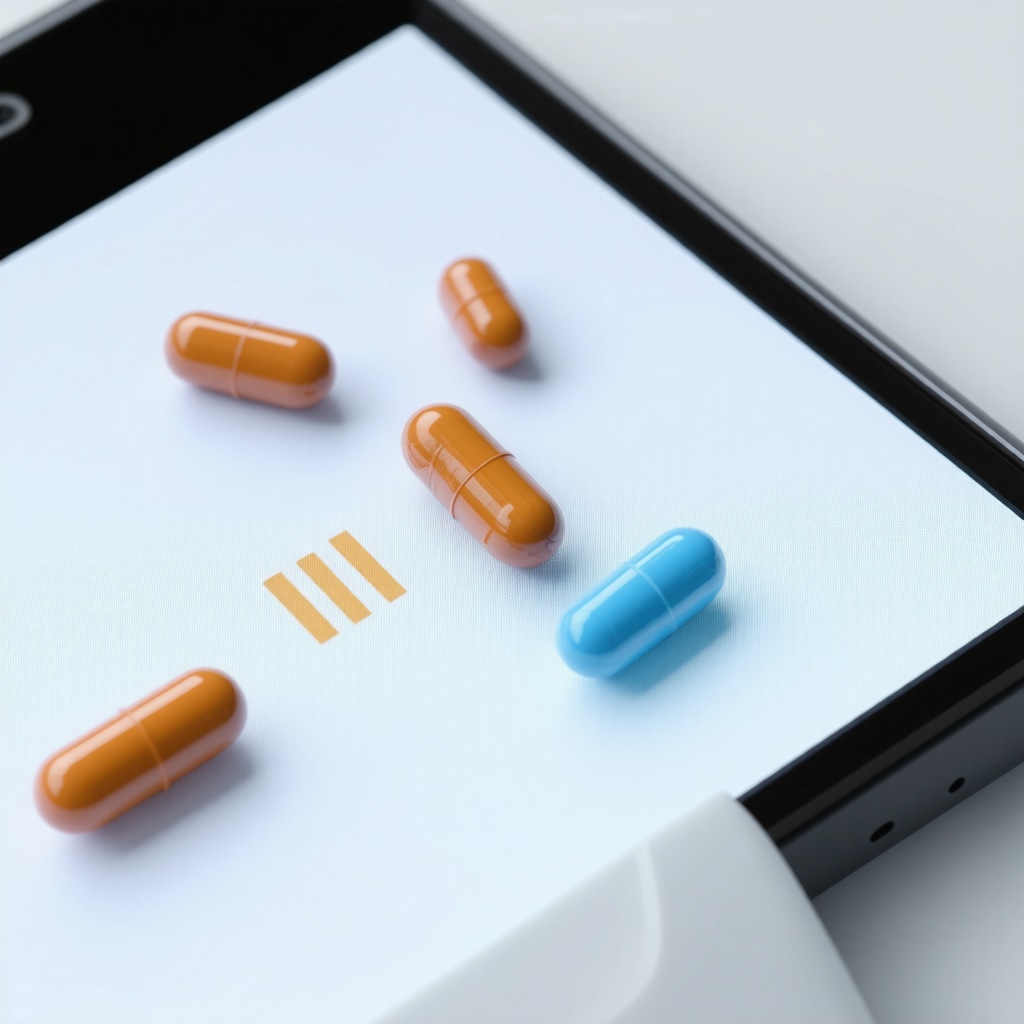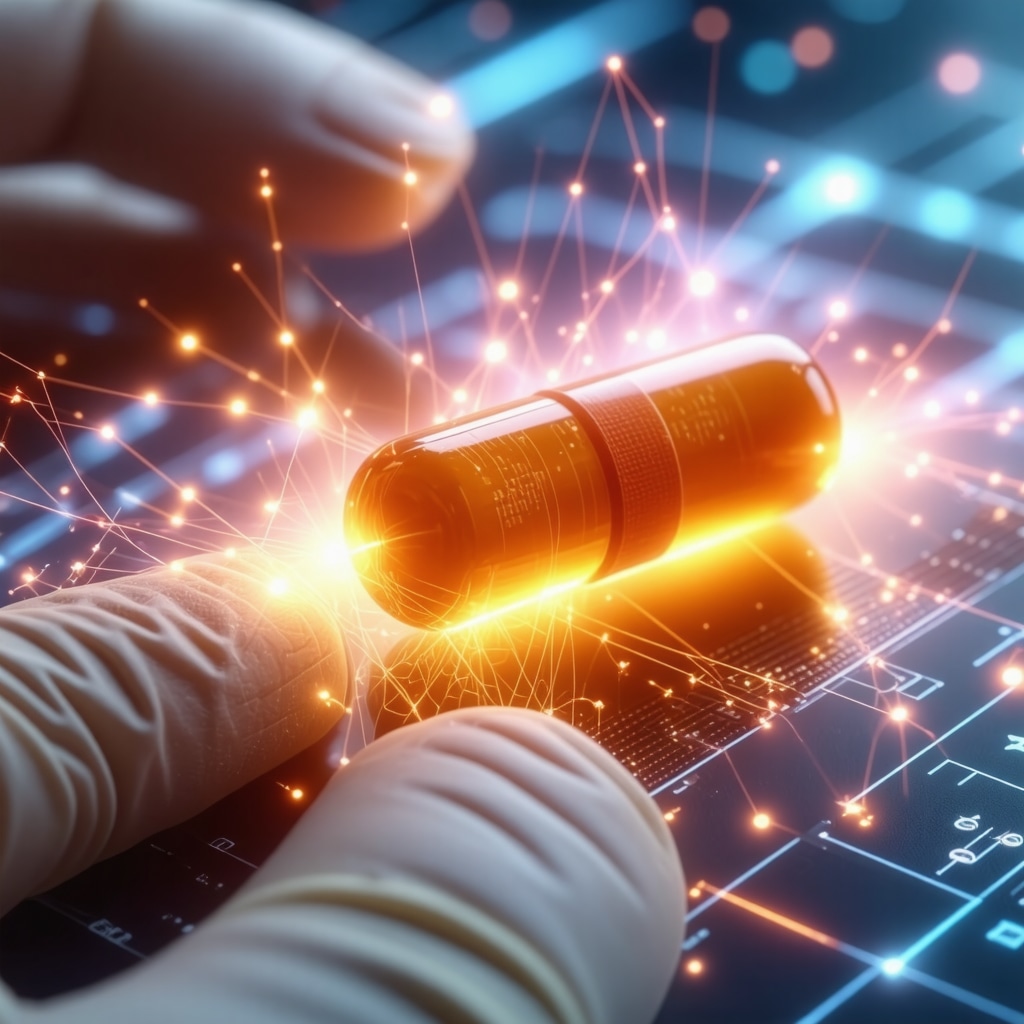Unlocking the Power of Hormone Pellet Therapy in Hillcrest: A New Frontier in Wellness
In the vibrant neighborhood of Hillcrest, San Diego, a transformative approach to hormone optimization is gaining momentum—hormone pellet therapy. As 2025 unfolds, more individuals seek solutions beyond traditional hormone replacement therapies (HRT) to address the nuanced challenges of hormonal imbalances that affect energy, mood, and overall vitality. Hormone pellet therapy offers a discreet, long-lasting, and bioidentical hormone delivery system that aligns closely with the body’s natural rhythms, making it a preferred choice among endocrinologists and naturopathic experts alike.
Why Choose Hormone Pellets? The Science Behind Sustained Hormone Release
Unlike conventional pills or creams that require daily administration and often lead to fluctuating hormone levels, hormone pellet therapy involves the subcutaneous insertion of tiny, bioidentical hormone pellets. These pellets steadily release hormones such as testosterone or estrogen over several months, ensuring a stable, physiologic balance. This method minimizes peaks and troughs often associated with oral or transdermal routes, which can trigger side effects or reduced efficacy.
Research published by the National Institutes of Health supports bioidentical hormone pellets for their favorable pharmacokinetics and patient compliance, highlighting their potential in personalized hormone therapy.
Hillcrest’s Unique Approach: Integrating Personalized Care with Hormone Pellet Therapy
Hillcrest’s hormone clinics emphasize individualized treatment plans, starting with comprehensive hormone testing to identify specific deficits or imbalances. This tailored strategy optimizes dosing and timing, enhancing therapeutic outcomes. Patients often report improvements in energy, libido, cognitive clarity, and mood stabilization within weeks of pellet insertion.
How Does Hormone Pellet Therapy Compare to Other Bioidentical Hormone Replacement Options?
While bioidentical hormones can be administered via creams, gels, or injections, pellets provide a continuous, consistent hormone delivery that mimics the body’s natural secretion patterns more closely. This reduces the need for frequent dose adjustments and enhances patient convenience. Moreover, pellet therapy sidesteps first-pass liver metabolism associated with oral hormones, lowering potential risks.
For those interested in exploring this therapy, reviews of San Diego’s most trusted hormone pellet therapy approach provide insightful patient experiences and clinical protocols.
Real-Life Experiences: Patient-Centered Outcomes in Hillcrest
Consider Sarah, a 48-year-old woman from Hillcrest who struggled with menopausal symptoms such as hot flashes, mood swings, and fatigue. After starting hormone pellet therapy, she noticed a marked reduction in symptoms within one month, attributing her renewed vitality to the steady hormone levels delivered by pellets. Similarly, Mark, a 55-year-old man, experienced restored energy and improved muscle tone, highlighting pellet therapy’s versatility across age and gender.
What Should You Expect During and After Hormone Pellet Therapy?
The insertion procedure is minimally invasive, typically completed within minutes under local anesthesia. Post-insertion, patients can resume normal activities quickly, with minimal downtime. Understanding the recovery timeline helps set realistic expectations and enhances adherence to aftercare guidelines.
Regular follow-up and hormone level monitoring ensure optimal dosing and adjustments as needed, fostering long-term hormone balance and wellness.
Curious About the Safety Profile of Hormone Pellet Therapy?
As with any medical intervention, hormone pellet therapy carries potential risks, including minor infection or pellet extrusion, but these are rare when administered by experienced professionals. Its safety is well-documented in clinical studies, particularly when bioidentical hormones are used under medical supervision. For a deeper dive into safety considerations, visit expert analyses such as San Diego’s expert insights on BHRT safety.
Embracing hormone pellet therapy in Hillcrest means engaging with a community of knowledgeable providers dedicated to personalized, evidence-based hormone care.
If you’re ready to experience the difference hormone pellet therapy can make, reach out to Hillcrest’s leading hormone specialists and start your journey toward hormonal harmony today.
Finding Synergy: How Lifestyle Choices Amplify Hormone Pellet Therapy Benefits
Having personally witnessed the transformative effects of hormone pellet therapy, I’ve come to appreciate how lifestyle factors play a crucial role in sustaining and enhancing these benefits. Therapy isn’t a magic fix on its own; it’s more like a foundation that invites us to build healthier habits on top for long-term wellness.
One change I embraced was prioritizing consistent sleep patterns. Hormones are deeply intertwined with our circadian rhythms, so getting restorative sleep helps stabilize the hormone levels released by the pellets. Similarly, regular physical activity—especially strength training—has been a game-changer for me. It supports natural testosterone production and complements the muscle tone improvements many patients report, like Mark from Hillcrest.
Nutrition’s Role: Eating to Support Hormonal Harmony
Nutrition is another piece of the puzzle I had to get serious about. Foods rich in healthy fats, like avocados, nuts, and olive oil, support hormone synthesis. I also focus on reducing processed sugars and refined carbs, which can disrupt insulin and cortisol balance, indirectly affecting hormone therapy results.
In fact, a compelling study published by the NIH emphasized how diet quality can influence hormone metabolism and overall endocrine function. This research reinforced my commitment to mindful eating alongside my hormone pellet regimen.
How Can You Recognize If Your Lifestyle Is Truly Supporting Your Hormone Therapy?
This question often comes up when chatting with others curious about hormone optimization. From my experience, signs that your lifestyle is aligned with your therapy include sustained energy throughout the day, improved mood stability, and the absence of hormone fluctuation symptoms like hot flashes or irritability. Regular monitoring of hormone levels with your healthcare provider remains essential, but tuning into your body’s cues can be equally insightful.
Integrating Mindfulness and Stress Management
Stress can be a silent saboteur of hormone balance. Incorporating mindfulness practices such as meditation, yoga, or even simple breathing exercises has helped me and many others maintain a calm baseline, which supports the steady hormone release from pellets. Hillcrest clinics often recommend these complementary approaches as part of a holistic care plan.
For those interested, exploring resources on how to combine diet and BHRT for lasting hormone balance can offer practical tips and support.
Listening to Your Body: A Continuous Journey
One of the most valuable lessons I’ve learned is that hormone optimization is not a one-and-done deal. It requires ongoing attention and adjustment, guided by how you feel and what your labs show. This dynamic approach ensures therapies like hormone pellet insertion stay effective and aligned with your evolving health needs.
If you’ve tried hormone pellet therapy or are considering it, I’d love to hear about your experiences or questions. Sharing stories and insights enriches our collective journey toward balanced, vibrant health.
Feel free to reach out to specialists or drop a comment below to keep the conversation going!
Precision Hormone Monitoring: Beyond Standard Testing for Optimal Pellet Dosage
While baseline hormone panels are essential, emerging evidence suggests that dynamic hormone monitoring—tracking fluctuations in serum hormone concentrations at multiple intervals post-insertion—can significantly refine pellet dosing protocols. This nuanced approach helps clinicians tailor therapy more precisely to an individual’s metabolic clearance rates and receptor sensitivities, minimizing underdosing or overdosing risks that can blunt therapeutic benefits or cause adverse effects. For example, measuring free testosterone and estradiol at 2, 6, and 12 weeks post-insertion can inform whether supplemental pellets or dose adjustments are needed long before symptom relapse occurs.
Integrative Endocrinology: Combining Hormone Pellet Therapy with Peptide Modulators and Nutraceutical Support
Cutting-edge practices in Hillcrest are moving towards integrative models that complement hormone pellet therapy with targeted peptide hormones such as sermorelin or ipamorelin, which stimulate endogenous growth hormone release. These adjuncts can synergize with bioidentical hormone pellets to enhance body composition, cognitive function, and cellular repair mechanisms. Additionally, nutraceuticals like DIM (diindolylmethane) and NAC (N-acetyl cysteine) are being leveraged to modulate estrogen metabolism and support liver detoxification pathways, optimizing hormone clearance and minimizing estrogen dominance risks.
Can Advanced Biomarkers Predict Individual Responses to Hormone Pellet Therapy?
This question reflects the forefront of personalized hormone medicine. Recent studies have proposed that evaluating polymorphisms in genes encoding for hormone receptors (e.g., androgen receptor CAG repeats) and enzymes involved in steroidogenesis (like CYP19A1 aromatase variants) may predict differential responses to bioidentical hormones. Incorporating these biomarkers into pre-treatment assessments could enable clinicians in Hillcrest to anticipate efficacy and side effect profiles, thereby customizing therapy regimens with unprecedented precision. However, this remains an evolving field requiring robust clinical validation.
For those interested in the molecular underpinnings of hormone pellet therapy optimization, the Frontiers in Endocrinology article provides a comprehensive review of genetic influences on hormone therapy outcomes.
Addressing Complex Cases: Hormone Pellet Therapy in Patients with Comorbidities
Hillcrest clinicians frequently encounter patients with multifactorial health challenges such as metabolic syndrome, autoimmune disorders, or cardiovascular disease, necessitating a nuanced approach to hormone pellet therapy. For instance, in patients with insulin resistance, balancing testosterone or estrogen doses must consider potential impacts on glucose metabolism and inflammatory markers. Similarly, autoimmune patients may require adjunct immunomodulatory strategies alongside hormone optimization to prevent exacerbations. Collaborative care involving endocrinologists, rheumatologists, and nutritionists ensures holistic management and maximizes safety.
Emerging Technologies: Smart Pellets and Remote Monitoring for Enhanced Patient Engagement
Looking forward, the integration of biosensor technologies with hormone pellets is on the horizon. Smart pellets embedded with microchips could potentially transmit real-time hormone release data to clinicians, enabling remote adjustments and early detection of therapy deviations. Coupled with mobile health apps, patients in Hillcrest could actively engage in their hormone optimization journey, tracking symptoms, lifestyle factors, and lab results seamlessly. Such innovations promise to elevate hormone pellet therapy from a static intervention to a dynamic, interactive process.
If you’re intrigued by these advanced concepts or want to explore how personalized hormone pellet therapy can fit into your health strategy, don’t hesitate to connect with Hillcrest’s expert hormone specialists who are at the forefront of these cutting-edge approaches.

Precision Dosing Through Pharmacogenomics: Tailoring Hormone Therapy at the Molecular Level
Recent advancements in pharmacogenomics have revolutionized how clinicians approach hormone pellet therapy, transcending traditional one-size-fits-all dosing models. By analyzing individual genetic variations affecting hormone receptor sensitivity and metabolism, practitioners in Hillcrest can now predict therapeutic responses with remarkable accuracy. This molecular precision mitigates risks associated with over- or under-treatment, optimizing patient-specific outcomes in energy, mood, and metabolic regulation.
Synergistic Strategies: Harnessing Peptide Hormones and Nutraceuticals to Enhance Pellet Efficacy
Integrative protocols that couple hormone pellets with adjunctive peptide therapies, such as sermorelin and ipamorelin, are gaining traction for their capacity to stimulate endogenous growth hormone secretion. This synergy not only bolsters anabolic processes and cognitive function but also accelerates cellular repair mechanisms. Nutraceuticals like diindolylmethane (DIM) and N-acetyl cysteine (NAC) serve as vital modulators of estrogen metabolism and hepatic detoxification pathways, creating a more favorable endocrine milieu that enhances pellet therapy efficacy.
What Emerging Biomarkers Are Most Promising for Predicting Individual Responses to Hormone Pellet Therapy?
Cutting-edge research identifies polymorphisms in androgen receptor genes (e.g., CAG repeat length) and variations in steroidogenic enzymes such as CYP19A1 aromatase as pivotal biomarkers. These genetic indicators provide insights into hormone receptor functionality and metabolic clearance rates, enabling clinicians to anticipate both efficacy and potential adverse effects with greater precision. Utilizing these biomarkers in pre-treatment evaluation represents a paradigm shift toward truly personalized hormone optimization.
For a comprehensive exploration of this topic, consult the peer-reviewed Frontiers in Endocrinology review on genetic influences in hormone therapy, which meticulously dissects the interplay between genomics and hormone replacement outcomes.
Managing Complex Comorbidities: Hormone Pellet Therapy in Multifaceted Clinical Scenarios
Hillcrest’s seasoned practitioners often tailor hormone pellet protocols to patients with intricate health profiles, including metabolic syndrome, autoimmune conditions, and cardiovascular disease. This nuanced approach involves careful modulation of hormone doses to mitigate impacts on glucose homeostasis and inflammatory cascades. Collaborative interdisciplinary care ensures that hormone optimization harmonizes with broader therapeutic goals, minimizing risks and enhancing quality of life in these challenging contexts.
Emerging Technologies: The Dawn of Smart Hormone Pellets and Digital Therapeutics
Innovation is steering hormone pellet therapy toward an era of digital integration. Smart pellets embedded with micro-sensors promise to provide continuous hormone release metrics, facilitating real-time clinician oversight and adaptive dosing algorithms. When paired with sophisticated mobile health applications, patients gain unprecedented agency over their hormonal health, tracking symptoms, lifestyle variables, and biochemical data seamlessly. This convergence of biotechnology and digital health heralds a dynamic, patient-centered model of hormone optimization.
For those eager to explore how these cutting-edge developments in hormone pellet therapy can transform your wellness journey, connect with Hillcrest’s leading hormone specialists to access personalized, state-of-the-art care.

Frequently Asked Questions (FAQ)
What exactly is hormone pellet therapy and how does it differ from traditional hormone replacement methods?
Hormone pellet therapy involves the subcutaneous implantation of small, bioidentical hormone pellets that provide a steady, controlled release of hormones such as testosterone or estrogen over several months. Unlike traditional methods like pills, creams, or injections, pellets bypass daily dosing fluctuations and first-pass liver metabolism, resulting in more stable hormone levels and improved patient compliance.
Who is an ideal candidate for hormone pellet therapy?
Ideal candidates are adults experiencing symptoms of hormone imbalance, such as fatigue, decreased libido, mood disturbances, or menopausal symptoms, who desire a long-lasting and consistent hormone delivery method. However, candidates with certain comorbidities or contraindications should be carefully evaluated by specialists to personalize therapy safely.
How is the hormone pellet insertion procedure performed and what should I expect during recovery?
The insertion is a minimally invasive outpatient procedure performed under local anesthesia, typically lasting just a few minutes. Patients experience minimal discomfort and can usually resume normal activities within 24 to 48 hours. Follow-up visits are essential to monitor hormone levels and adjust dosing as needed.
What are the potential risks or side effects associated with hormone pellet therapy?
Risks include minor infection, pellet extrusion, or localized irritation at the insertion site. When administered by experienced practitioners and combined with personalized dosing protocols, these risks are rare. Systemic side effects are minimized due to steady hormone release, but ongoing monitoring is critical to detect and manage any adverse effects promptly.
How do lifestyle factors influence the effectiveness of hormone pellet therapy?
Lifestyle choices such as consistent sleep patterns, regular exercise (particularly strength training), balanced nutrition rich in healthy fats, and effective stress management enhance the therapy’s benefits by supporting natural hormone production, optimizing metabolic pathways, and stabilizing circadian rhythms. Integrating mindfulness practices further contributes to hormonal balance and overall wellness.
Can hormone pellet therapy be combined with other treatments or supplements?
Yes, integrative approaches in Hillcrest often combine hormone pellets with peptide therapies like sermorelin and ipamorelin to stimulate endogenous growth hormone release, alongside nutraceuticals such as DIM and NAC that support estrogen metabolism and liver detoxification. These combinations can synergistically enhance therapeutic outcomes but should be managed by qualified providers.
Are there advanced diagnostics to optimize hormone pellet dosing?
Beyond standard hormone panels, dynamic hormone monitoring at multiple intervals post-insertion and pharmacogenomic profiling of hormone receptor gene polymorphisms and metabolic enzyme variants enable clinicians to tailor dosing with high precision. This approach minimizes risks of under- or overdosing and maximizes symptom control.
How does hormone pellet therapy accommodate patients with complex health conditions?
Patients with comorbidities such as metabolic syndrome, autoimmune diseases, or cardiovascular issues require individualized hormone protocols developed through interdisciplinary collaboration. Careful dose adjustments and adjunct therapies ensure hormone optimization aligns safely with overall health management goals.
What emerging technologies are shaping the future of hormone pellet therapy?
Innovations include smart hormone pellets embedded with biosensors that transmit real-time hormone release data, enabling remote clinician monitoring and adaptive dosing. Coupled with digital health applications, these technologies empower patients with interactive symptom and lifestyle tracking, transforming hormone therapy into a dynamic and personalized process.
How can I find trusted providers for hormone pellet therapy in Hillcrest?
Seek clinics with experienced endocrinologists or naturopathic doctors who emphasize personalized care, comprehensive hormone testing, and integrative approaches. Verified patient reviews and transparent clinical protocols enhance provider credibility. For example, Hillcrest’s leading specialists offer state-of-the-art hormone pellet therapy combined with lifestyle and nutritional guidance to optimize outcomes.
Trusted External Sources
- National Institutes of Health (NIH) – Bioidentical Hormones and Endocrinology Research: Provides peer-reviewed clinical studies and pharmacokinetic data validating hormone pellet therapy efficacy and safety.
- Frontiers in Endocrinology: A leading academic journal offering comprehensive reviews on genetic polymorphisms influencing hormone therapy responses, crucial for advanced personalized medicine approaches.
- Endocrine Society Clinical Practice Guidelines: Authoritative recommendations on hormone replacement therapies, including bioidentical hormones, ensuring evidence-based clinical decision-making.
- American Association of Clinical Endocrinologists (AACE): Offers updated protocols on hormone optimization, patient management strategies, and integrative treatments relevant to complex cases.
- San Diego Hormone Therapy Centers and Hillcrest Specialized Clinics: Local expert providers offering tailored hormone pellet therapy with patient testimonials and detailed treatment frameworks, representing real-world clinical excellence.
Conclusion: Embracing Precision and Integration in Hormone Pellet Therapy
Hormone pellet therapy in Hillcrest represents a sophisticated evolution in hormone optimization, delivering consistent, physiologic hormone levels through bioidentical pellets that align closely with the body’s natural rhythms. This method stands out by enhancing patient adherence, minimizing side effects, and supporting rapid symptom relief across diverse populations.
Crucially, its success hinges on a precision medicine approach—incorporating advanced hormone monitoring, pharmacogenomics, and integrative adjuncts like peptide therapies and nutraceuticals. Complemented by lifestyle modifications encompassing nutrition, exercise, sleep, and stress management, patients unlock the full spectrum of benefits for sustained vitality and well-being.
As emerging technologies such as smart pellets and digital therapeutics become available, hormone pellet therapy will further transform into a dynamic, patient-empowered journey.
If you are exploring hormone optimization, consider consulting Hillcrest’s expert hormone specialists to receive personalized, evidence-based care tailored to your unique biology and health goals. Share your experiences, ask questions, and explore related expert content to deepen your understanding and embrace a balanced, vibrant life.

